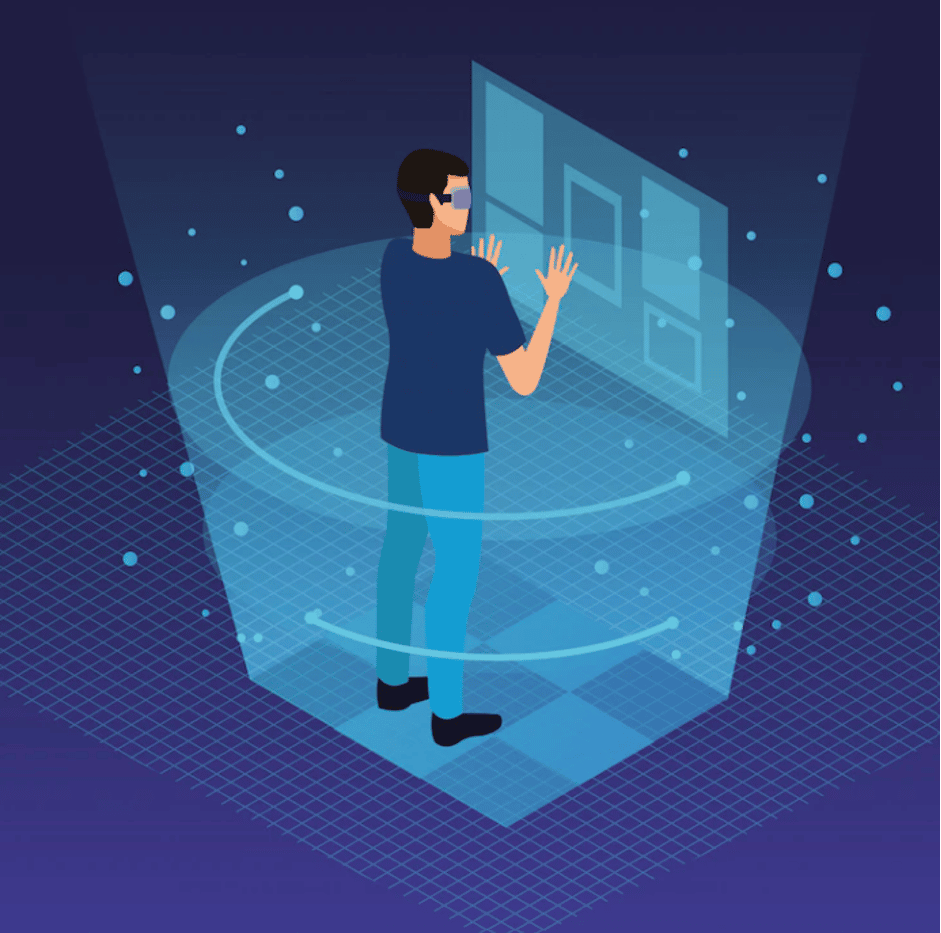The field of virtual reality (VR) technology is developing quickly and has the potential to completely change how presentations are carried out. VR is a compelling tool for technology presentations because it can fully immerse an audience in a virtual setting, enabling them to engage with digital content in a manner that seems authentic. VR can offer a new level of engagement to any presentation, whether it be displaying a new product, outlining a complicated procedure, or presenting statistics in a visually appealing manner. This post will look at the advantages of VR, how it may be used in technical presentations, and how to make a good VR presentation.
What is VR or Virtual Reality?
With the use of virtual reality (VR) technology, you can experience the equivalent of being physically there in another place. VR delivers an immersive experience where the user may interact with digital content, such as images, movies, and sounds, as if they were truly, thereby donning a headgear that blocks out the outside world.
VR has the ability to provide novel and fascinating experiences that blend the real and virtual worlds, whether you’re playing a game, touring a virtual museum, or giving a virtual presentation. The way we live, work, and play could alter with improvements in VR technology, such as better graphics, haptic feedback, and increased interactivity.
Reasons that make VR presentations unique
Virtual reality presentations have their own advantages compared to traditional presentations using professional google slides templates and PowerPoint templates.
1.Immersive
You’ll probably observe that during most presentations, the audience’s attention will waver. You must work very hard to keep them focused. Of course, changing the content is one method. A humorous introduction is followed by a serious discussion of a pertinent case or project. Display a video, pose a query, or initiate a dialogue.
However, virtual reality gives a tool that enables total immersion. There is no distraction once the headphones are on, only total concentration. The virtual environment that you are creating is all around the viewer, with nothing to hide from your message.
2.Exciting
It’s thrilling because it uses both the auditory and visual senses (pictures and movies). However, a 360-degree photo or video, especially one that is stereo, is far more valuable than a single paragraph.
3. Interactive
If you use Navigation or Hotspot overlays in your presentation, it becomes interactive. This enables you to add educational or amusing image/video-based hotspots to it while also enabling your audience to go to the information or material they choose.
4. Remarkable
A “VR Experience” is a common term used to describe virtual reality. This is very true; it might be a moment that changes your life and makes you realize your limitless potential. Information presented in a virtual environment helps people remember it better, as has already been demonstrated.
This could make your presentation stand out from the crowd and help the audience remember your content longer.
Usage of VR in technology presentations
Presentations are only one of the many businesses that are using virtual reality (VR), a fast-expanding technology. It is simpler to communicate complicated ideas and information when presenters utilize virtual reality (VR) to immerse and connect with their listeners.
The capacity to build believable, three-dimensional settings that let audience members explore and engage with the technology being displayed is one of the main advantages of using VR in technology presentations. This enables the technology to be presented in a way that is significantly more interesting and memorable than conventional presentations.
The capacity to replicate real-world settings and evaluate how the technology would function in these circumstances is another benefit of employing VR in technology presentations. This can be especially helpful when introducing new ideas and technologies because it enables participants to use the technology in a way that is far more meaningful and suited to their requirements.
A level of personalization and flexibility not available with conventional presentations is also provided by VR. Presenters can design unique VR settings and experiences that are catered to their target audience and objectives. As a result, they can provide presentations that are a lot more interesting and useful than conventional ones.
VR is not just a useful tool for technological presentations, but it is also getting easier to use. Businesses and organizations of all sizes are finding it simpler to incorporate VR into their presentations as a result of the ubiquitous availability of VR hardware and software.
Conclusion
To sum up, virtual reality technology is changing how technology presentations are given and perceived. Presentations are becoming more interesting, memorable, and effective thanks to VR’s ability to create immersive, interactive, and realistic worlds.
It is obvious that VR is positioned to play an even bigger part in the future of technology presentations as it develops and becomes more widely available. The potential of virtual reality technology should be investigated by companies and organizations of all sizes in order to learn how it may improve presentations and engage audiences like never before.

